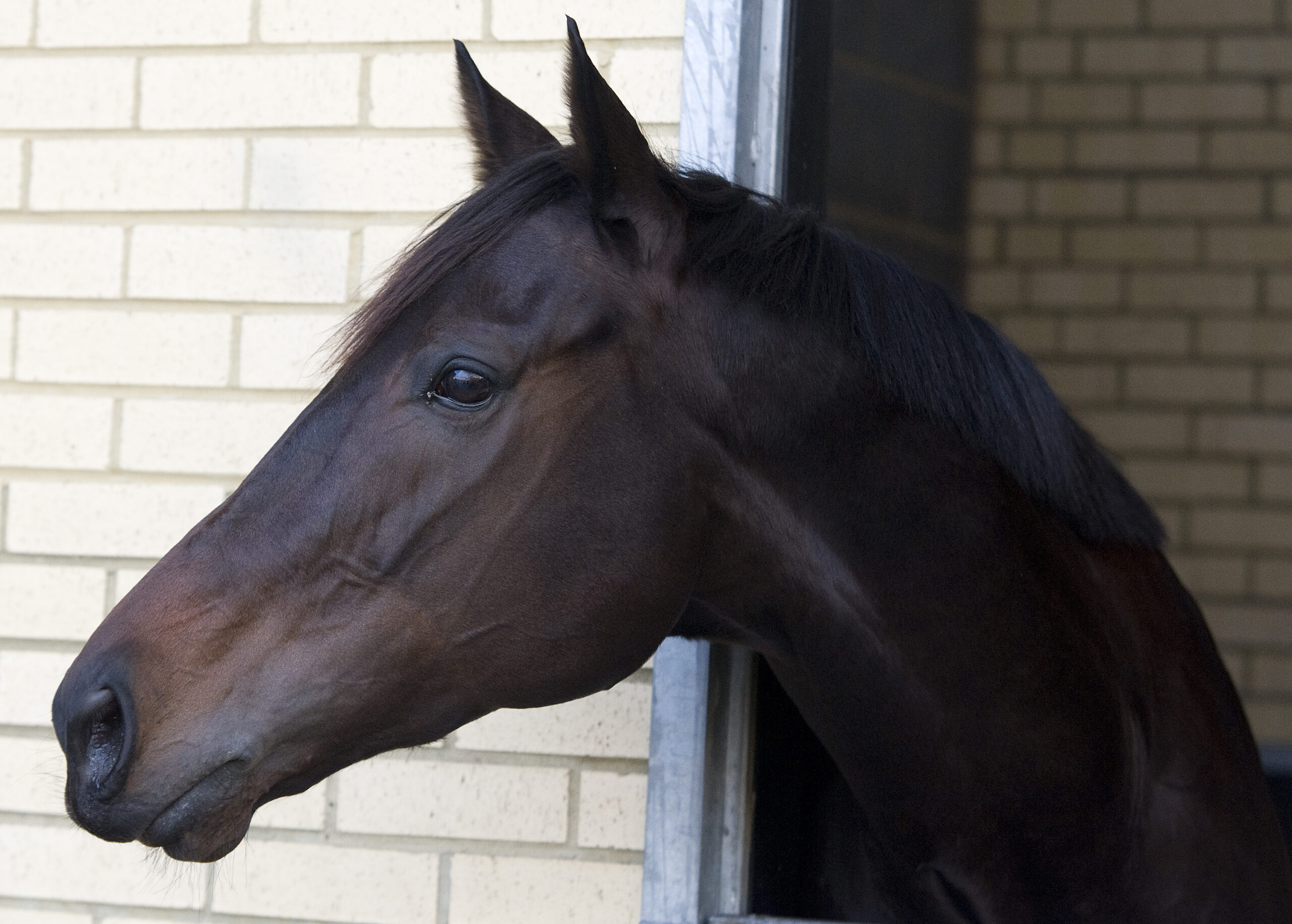Today, we honour the life and legacy of Nelly (Black Caviar) who captured the hearts of so many.
Her career was one of great “success”, but at great cost.
Her racetrack success earned her owners just under 8 million dollars, the expense however was a life of pain and suffering for Nelly.
Behind the glory of her racing career lies a story that must be told. Instead of enjoying a well-deserved retirement after giving so much, Nelly was continuously and forcibly impregnated to produce foals, generating even more profit.
If a horse as famous and accomplished as Nelly wasn’t afforded humane treatment and respect in her later years, the outlook for countless other racehorses is bleak.
Horse racing has long been described as a realm of high fashion, champagne, thrilling finishes, and legends like Phar Lap and Black Caviar. Yet, beneath this veneer of glitz and glamour, there lies a murkier reality for the beautiful animals that the horse racing industry “celebrates.”
During their racing careers, horses are often subjected to immense physical stress. The act of racing, especially at high speeds and over considerable distances, can result in injuries that are catastrophic. Stress fractures, ligament issues, and respiratory problems are not uncommon. Some horses are pushed to such extremes that they face long-term health issues well past their racing days.
One might assume after her glittering racing career, Nelly would have earned a peaceful retirement. This was not the case, she was instead entered into the breeding industry. Over just 11 years, she produced 9 foals, exemplifying a widespread practice where retired mares are constantly impregnated to generate profit through their offspring. This aspect of her post-racing life starkly contrasts with the jubilant celebrations of her track victories. It highlights profound ethical issues within the horse racing industry.
Horses are herd animals and naturally live together in large groups. Horse racing can be isolating and lonely. In addition to the gruelling training schedules, racehorses can spend up to 23 hours a day alone in a stable. This can manifest as behavioural issues linked to stress and anxiety.
In addition to this unnatural environment, horses suffer physically for human “entertainment”. To ensure horses reach maximum speed, they are whipped. This is a legal and widespread practice.
According to Vet Voice ‘tongue ties’ (an elastic or rubber band that temporarily fixes the horse’s tongue to its lower jaw) are used to help a horse to take in more air while running, particularly if they have a condition where the area in front of their vocal cords collapses at high speed called ‘dorsal displacement of the soft palate”.
In addition, a horse is easier to control and more compliant when pressure is applied via the reins to the bit on the horse’s tongue. Issues with tongue tie use are pain, anxiety, distress, difficulty swallowing, cuts, lacerations to the tongue, bruising and swelling.
Spurs (sharp metal attachments to riding boots) are used to exert pressure when a jockey kicks or squeezes a horse in the sides. Once again, this is a widespread practice.
Horse trainers have been known to give horses stimulants for extra temporary energy and pain-relieving drugs to mask the pain that may result from disease or injury. Certain drugs can also be used to control pulmonary bleeding resulting from over-exertion in racing.
Horse racing also brings grim statistics to light. According to data from the Coalition for the Protection of Racehorses (CPR), it is estimated that around 125 horses die on racetracks in Australia alone each year. These deaths are a direct result of injuries sustained while racing, highlighting the dangerous nature of sport and the intense pressure placed upon these animals.
Upon retiring, many successful racehorses enter the breeding industry, which poses its own set of challenges. Mares like Nelly might spend the rest of their lives producing foals, their value viewed primarily in terms of reproductive profitability rather than their well-being. The repetitive cycles of pregnancy take a toll on their physical health and well-being, often leading to complications and a life far removed from the pastures of comfort and care they deserve.
Others who have not succeeded and have no perceived value, risk being sent to slaughterhouses. In a 2019 investigation, the ABC revealed that “around 300 racehorses went through Meramist Abattoir in just 22 days. They had won a combined prizemoney of almost $5 million. On one day alone, covert cameras record more than 40 racehorses being slaughtered.” This is just one slaughterhouse that was investigated.
The RSPCA identified that “The majority of racehorses will have a racing career of only 2-3 years, yet their life expectancy is 25-30 years. There is a high level of public expectation that these horses will be appropriately cared for in their post-racing life, not least because they have been bred and used for sport and profit in a multi-billion-dollar industry.” The grim reality is that there is a term to describe these horses…..wastage.
Nelly’s legacy is indisputable. She was more than a horse; she was an icon. If Nelly was not afforded respect and care in her retirement, then the thousands of unknown horses face little chance of a dignified life or indeed even a life.
There is nothing glamourous or exciting about suffering, injured and dead horses. Make a pledge now to no longer enable or fund this cruel industry. Say no to attending horse racing, celebrating Cup Day and betting on races.
Let us honour Nelly not by celebrating her extraordinary accomplishments on the track but by advocating for the ethical treatment of all racehorses, including in their post-racing lives. Racing kills, on track and off the track. It is time to end racing and its exploitation of horses.
Run free, Nelly.
